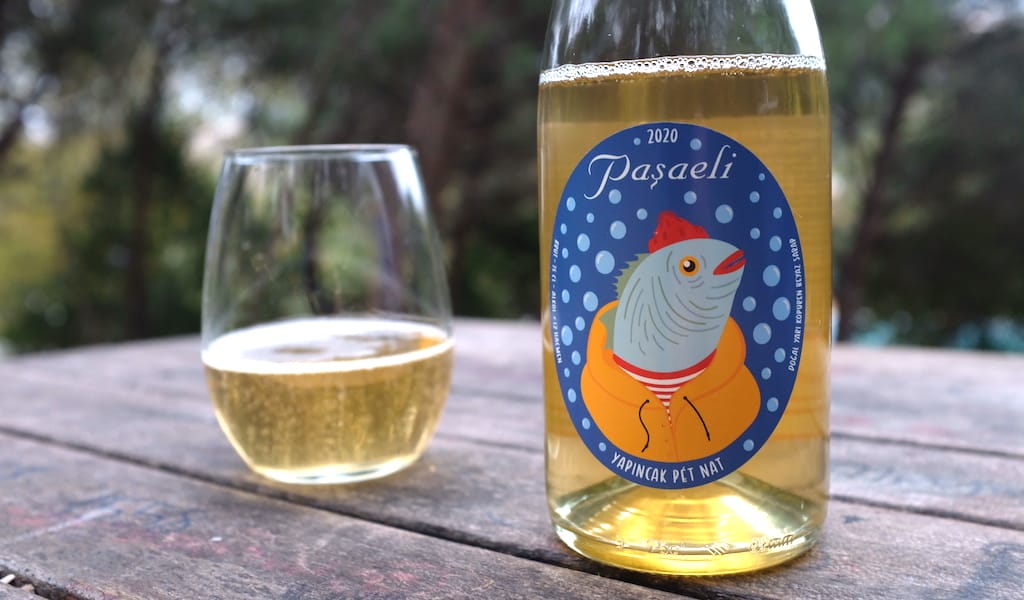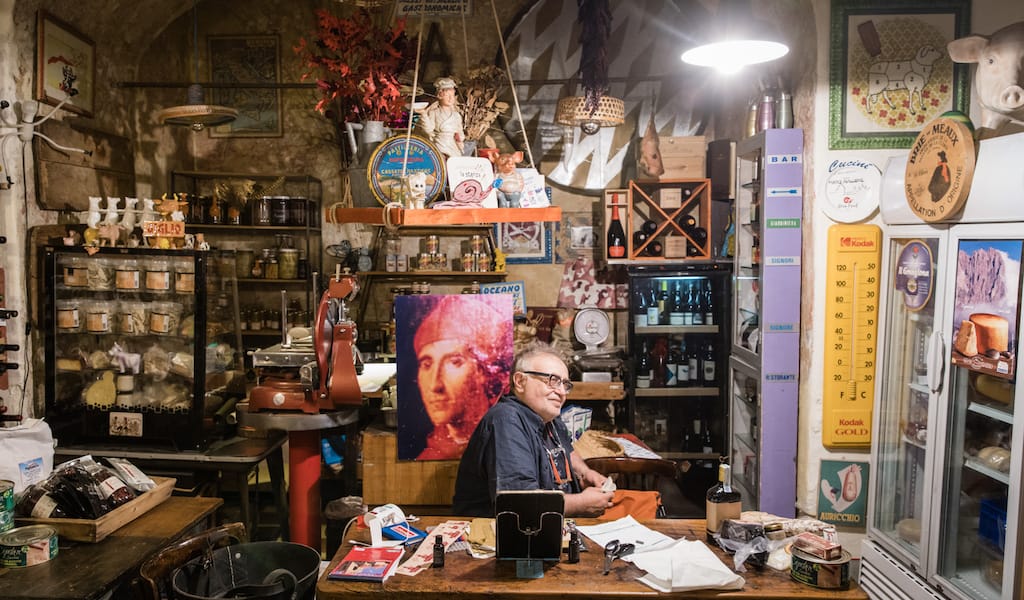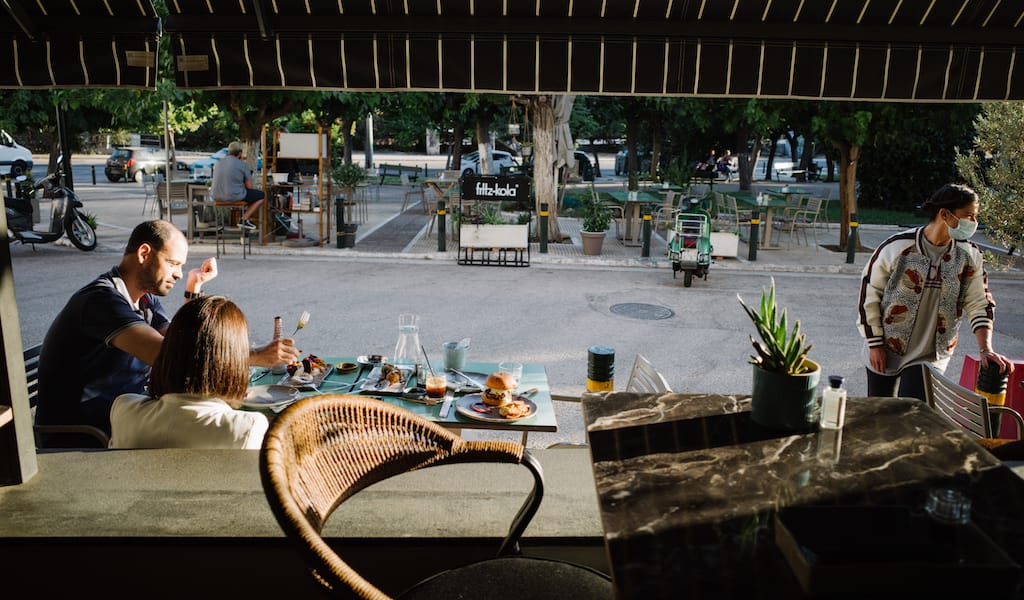When walking around the Akatlar neighborhood, it’s easy to forget that we’re just a stone’s throw from the glassy skyscrapers that tower over Istanbul’s financial district, Levent. The quiet residential area features a curious number of stand-alone villas. Even the apartment blocks seem to have fewer floors and more space in between buildings. The familiar sounds of gridlocked traffic are conspicuously absent.
Like in many Istanbul neighborhoods, the ground floors of most apartment buildings are below street level. Walking along Haydar Aliyev Caddesi, it’s easy to walk right past Santé Wine & More. This would be a shame, since that would mean missing out on a carefully curated selection of Turkish artisan wines.
We’ve come to Santé in search of a special bottle, and we don’t leave disappointed. Santé’s proprietor, Süray Atış, directs us to the top shelf of the köpüklü section, where we find a clear, heavy bottle with a crown cap, adorned with a playful, cartoon-like label.
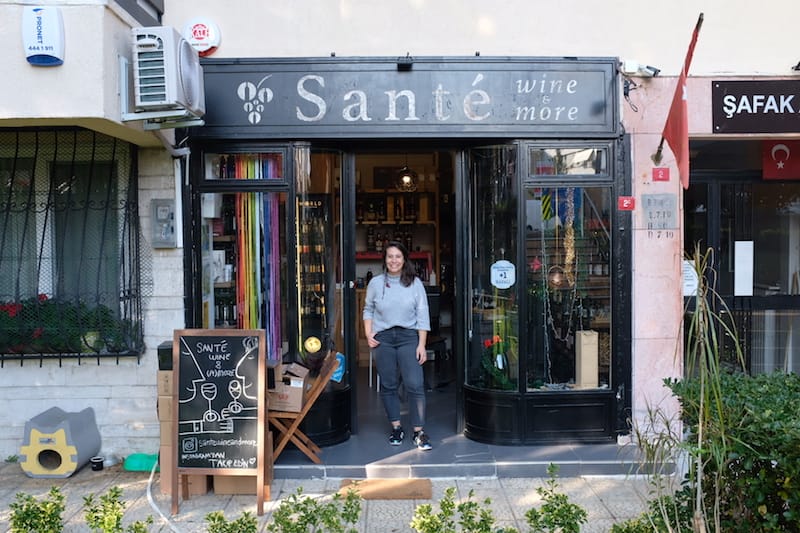
The cuvée is by Naif – a new label from Turkish vigneron Işık Gülçubuk, one of the winemakers at Paşaeli Wines, a winery in the province of Izmir. It’s among the first commercial releases of sparkling Turkish wine made in the pétillant naturel style. Pétillant naturel, or pét-nat for short, literally translates to “naturally sparkling,” so perhaps it shouldn’t be a surprise the winemaking technique is loved by the natural wine community.
Pét-nat is an “ancestral method,” Seyit Karagözoğlu, founder of Paşaeli Wines, tells us. “It’s the old method from before Champagne was created. You finish the fermentation in the bottle itself.”
As compared to Champagne, where a small amount of sugar and yeast is added at bottling to create a second fermentation in the bottle, pét-nat is bottled before the primary fermentation is completed. The wine continues to ferment in the bottle as yeasts convert sugar into alcohol. The fermentation process produces carbon dioxide, which, with nowhere to escape inside the bottle, naturally carbonates the wine.
If Champagne has come to represent class and luxury, then pét-nat is the hedonistic, anarchist cousin from the less moneyed side of the family. It’s equally at home in a dingy wine bar or a picnic in the park. It doesn’t need a special occasion other than a few friends getting together.
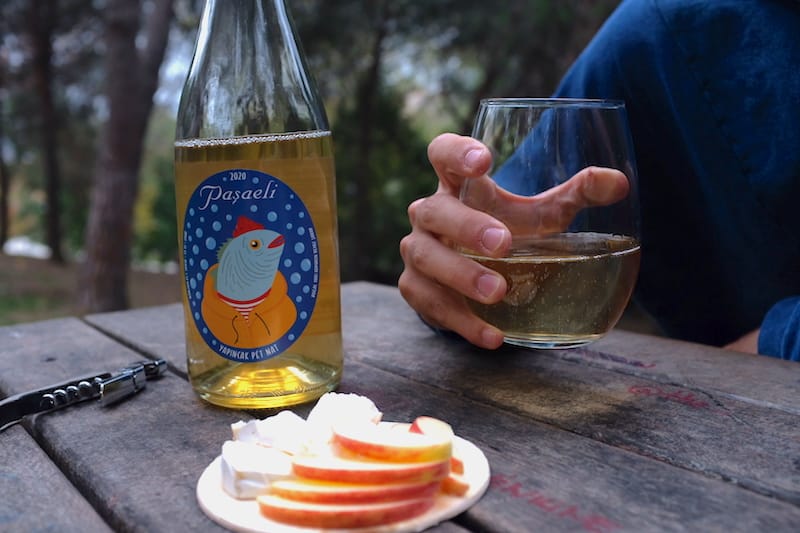
In the case of Naif, the wine is a rosé made in the light-pink Provençal style – though perhaps the true inspiration for this wine comes from another region of France: the Loire Valley.
Along with Beaujolais, winemakers in the Loire Valley pushed back against the widespread industrialization of wine in the 1970s and 80s. In both the vineyard and cellar, this nascent group of vignerons refused to modernize, embracing organic and biodynamic farming methods and traditional, if not archaic, wine-making techniques.
While the natural wine movement encompasses practically all wine-making regions and styles, pét-nat is perhaps a perfect symbol of the movement: wild, unpredictable and alive.
“Natural wine is not something made in factories,” says Seçil van Nunen, an organic farmer on Turkey’s Gökçeada island – where grapes have been cultivated since antiquity – who is experimenting with making pét-nat. Although she is Turkish, Seçil opts to use the island’s Greek name of Imbros for her brand in deference to the long-standing local Greek-speaking population. Gökçeada and Bozcaada were exempt from the population exchange of the 20s, though many left for Greece in the 50s. “My vineyards are in Agridia [Tepeköy], on the outskirts of Mount Dimitri [İlyas Dağ]. I have planted only local grapes with regenerative agriculture and a zero-emission, small-footprint approach,” she says.
Seçil draws her inspiration from the wine-making traditions of the island’s Greek inhabitants. “People used to have their own vineyards and make their own wine naturally in amphorae. We still have some families in the village keeping this tradition alive,” she says. “I’m still learning from my Greek neighbors who have made wine together with their families since they were kids.”
She has yet to commercially release a pét-nat, but is working on the winemaking method. “For making pét-nat, the sugar level is important. To catch the correct time is not easy, because things start rolling fast during the first fermentation. In this case, for the first 10 days we have to watch the sugar level very carefully and frequently,” she says.
Paşaeli’s Karagözoğlu concurs. “Every bottle ferments on its own. Every bottle is slightly different,” he says. Although Paşaeli also makes more conventional wines, for their pét-nats they embraced a more minimalist approach. The wines underwent spontaneous fermentation with native yeasts, were not fined or filtered, and were disgorged by hand — a process where dead yeast cells and sediment are ejected from the bottle before being topped off with additional wine. Karagözoğlu credits his winemaking team, especially Işık, for championing the project.
“We always try to push the envelope,” Karagözoğlu says. “The winemaking team was like, ‘Let’s try something different.’”
But first, that meant navigating the complex regulations surrounding alcohol production in Turkey. The Turkish government classifies pét-nat as a semi-sparkling wine, which requires an additional license to produce. Coupled with perennial tax hikes on alcohol – the tax on all sparkling wine spiked from 79.50 TL to 117.19 TL at the start of this year, and Paşaeli had to pay for an additional license to make theirs – Turkey’s first commercial pét-nat felt like a bigger risk than just a few bottles exploding during fermentation.
This led Paşaeli to play it safe with its first vintage, a limited run of around 1,200 bottles – approximately 300 bottles of four different cuvées. Each cuvée focuses on local, indigenous grapes.
If Champagne has come to represent class and luxury, then pét-nat is the hedonistic, anarchist cousin from the less monied side of the family.
Both of the wines released under Işık’s Naif label are made from Çalkarası, a grape native to Denizli in southwestern Turkey. Varying amounts of skin contact created two distinct colors and flavor profiles, though both could be classified as rosés. For the pét-nats released under Paşaeli’s label, Karagözoğlu turned to two native grape varieties he has helped champion: Sidalan and Yapıncak.
“We are blessed with hundreds and hundreds of indigenous grapes in Turkey,” he says. “We need to focus on indigenous grapes. We have yet to better understand them.”
Tasting both wines, one can see the potential in Turkey’s native grapes. Although Sidalan and Yapıncak are both white wines from neighboring regions – Çanakkale and Thrace, respectively – the flavor profiles are distinctly different, and every bit as “noble” as more famous international grapes.
The Sidalan is bright and effervescent; bone dry with a lively acidity. On the palate, there are notes of stone fruit and white flowers with a good minerality. At only 11% ABV, it’s a light and refreshing wine, reminiscent of a Loire Valley Chenin Blanc.
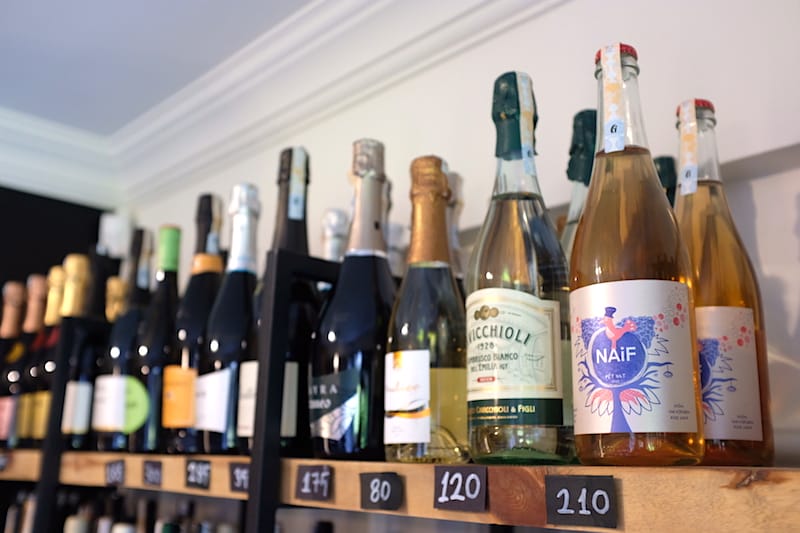
Clocking in at 12% ABV, the Yapıncak has a little more weight. On the nose, it’s sweet and yeasty, like a Blanc de Blancs Champagne. A touch of residual sugar makes this a wine that could stand up to some spicy food.
As long-time drinkers of pét-nats from vineyards as far afield as California to Australia, we’re excited to see Turkish winemakers embrace the “ancestral method.” In the course of researching this article, we discovered no less than three other Turkish winemakers experimenting with the method, so we expect even more Turkish pét-nat on the market in the coming years.
Here’s where to find Turkish Pét-nat in Istanbul:
Mensis Mahzen
From the street, Mensis Mahzen in Halaskargazi Mahallesi looks like any other tekel (a small convenient store that sells alcohol and tobacco), but it is so much more. Mensis stocks an impressive array of craft beer and fine spirits, but the real treasure trove is the selection of wines in the back.
La Cave
Beyoğlu’s Cihangir has long been a haunt for Istanbul’s bohemian types, and La Cave is where they find their libations.
Sante Wine & More
Husband and wife Doğu and Süray Atış left the bustle of Nişantaşı for a quieter life in Istanbul’s Akatlar neighborhood. In addition to curating an excellent selection of artisan Turkish wine, they run the Turkish-language culinary website Adim Adim Gurme.
 April 13, 2021 Mukhrani Nursery
April 13, 2021 Mukhrani Nursery
In March, as the teasing wafts of spring begin to fill the air, local farmers converge […] Posted in Tbilisi January 26, 2024 Drugstore Napoli
January 26, 2024 Drugstore Napoli
Dreamers make the world more beautiful. These extravagant eccentrics fascinate us with […] Posted in Naples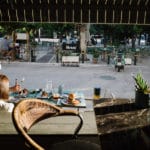 September 12, 2023 ParkBench
September 12, 2023 ParkBench
Before we start this story, we must first explain the role of the platia in Greece. […] Posted in Athens
Michael ButterworthMichael Butterworth
Published on February 10, 2022
Related stories
April 13, 2021
TbilisiIn March, as the teasing wafts of spring begin to fill the air, local farmers converge at the entrance of the Sunday bazaar in Garikula where they lean against their old jalopies with bundled fruit tree saplings and grapevine seedlings for sale. For someone who wants to start a little backyard vineyard with a handful…
January 26, 2024
NaplesDreamers make the world more beautiful. These extravagant eccentrics fascinate us with their seemingly impossible, utopian ventures, while equally making us wonder how their projects endure. Mario Avallone, 62, is one of these people. Get to know him, and he’ll happily tell you his tale: his travels around the world, his years living in Sicily,…
September 12, 2023
AthensBefore we start this story, we must first explain the role of the platia in Greece. Platia (πλατεία, pronounced pla-tee-ah and sometimes spelled plateia) means “plaza” in Greek, and can refer to a central town square or a small neighborhood square. All ages meet at the platia: babies in strollers, loud children running and playing…







































